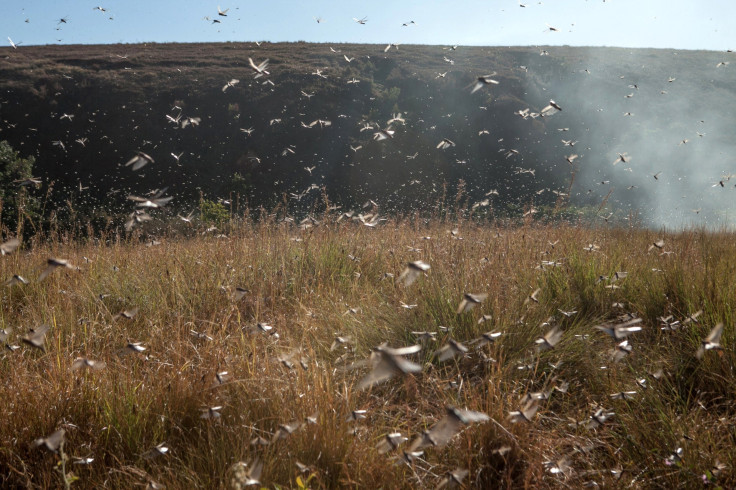Argentina Locust Plague: Armageddon, End of Days Or Climate Change Disaster?

Argentine farmers and agricultural authorities are dealing with the worst locust plague in more than half a century, the New York Times reported Tuesday. Fumigators in Argentina have continued their efforts to exterminate the locusts as farmers warned their crops may already be too damaged to be salvaged.
“It’s the worst explosion in the last 60 years,” Diego Quiroga, the agriculture agency’s chief of vegetative protection, told the New York Times. “It’s impossible to eradicate; the plague has already established itself," he said, adding, "We’re just acting to make sure it’s the smallest it can be and does the least damage possible.”
Locusts are small insects similar to grasshoppers. While often solitary, during certain parts of their life cycle, they become more active and travel in swarms. They can eat up to their entire body weight in vegetation, so a swarm of 460 square miles, which pack 40-80 million locusts per square mile, can eat 423 million pounds per day, according to National Geographic.
Argentina scrambles to fight biggest plague of locusts in 60 years https://t.co/fIWICZq9sS pic.twitter.com/SeJqm4CRdM
— The New York Times (@nytimes) January 26, 2016In the Torah — or the first five chapters of the Old Testament of the Bible for Christians — locusts were one of the 10 plagues God cast down on Egypt to punish them for their treatment of the Jews. Locusts were the eighth plague, followed by the plague of darkness and finally the death of all firstborn sons. While locusts are a naturally occurring phenomenon, many traditional cultures have warned their arrival signaled the end of days or a punishment from God.
Many Argentines have instead blamed the crisis on someone else entirely: former President Cristina Fernández de Kirchner. Agricultural authorities pointed to a United Nations report in November 2015, as well as a similar warning from local experts, which linked climate change to locust plagues. Farmers blame Kirchner for not heeding these warnings after locusts first began to appear in June 2015.
The U.N.-commissioned report focused on Africa — though the same principles in theory apply to Argentina — such as the influence of El Nino and the shifts in weather caused by climate change. “Extreme weather events, including torrential downpours, have the potential to trigger a massive surge in locust numbers,” wrote Keith Cressman, a senior forecasting officer for the report.
© Copyright IBTimes 2025. All rights reserved.






















